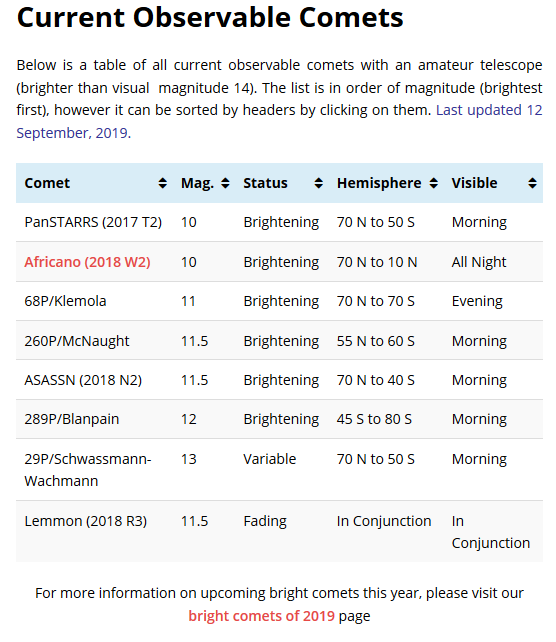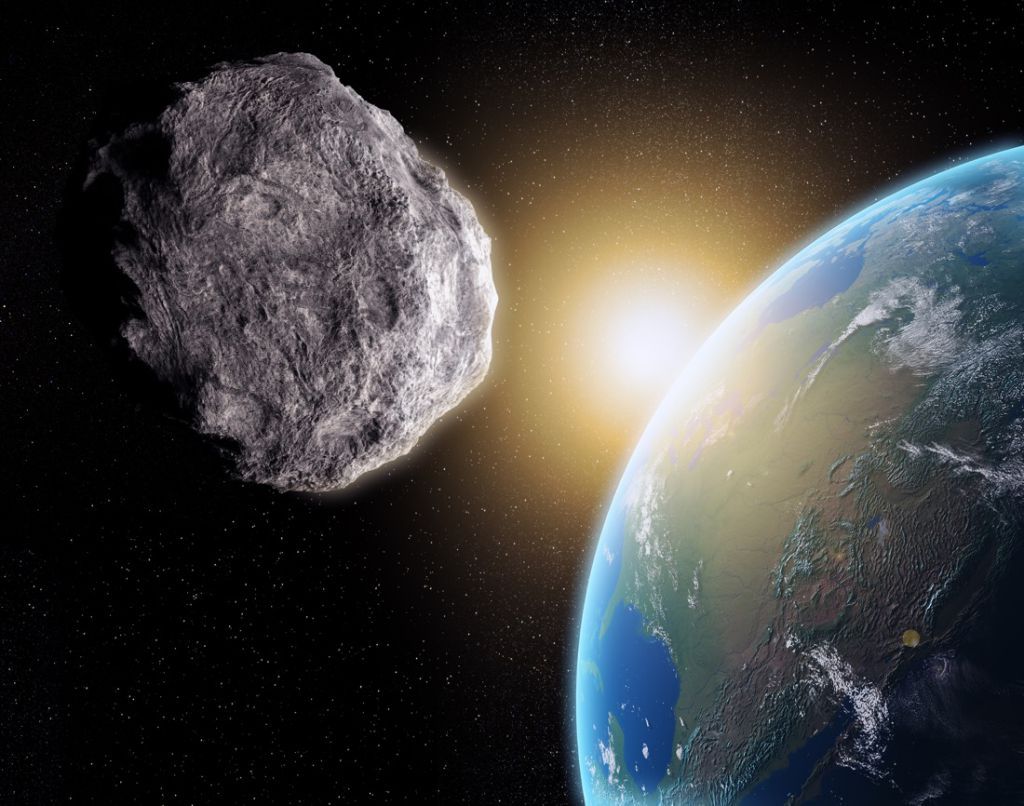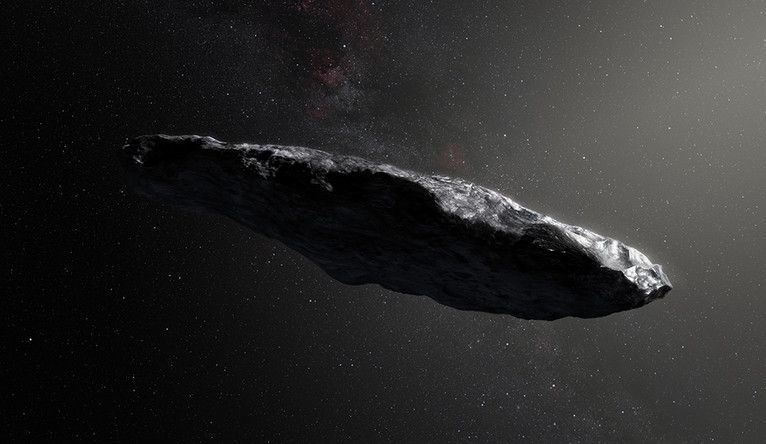Another possible interstellar comet headed our way in July 2020
PDF
Interstellar comets penetrating through the Solar System were anticipated for decades1,2. The discovery of non-cometary 1I/‘Oumuamua by Pan-STARRS was therefore a huge surprise and puzzle.
Furthermore, its physical properties turned out to be impossible to reconcile with Solar System objects3-5, whichradically changed our view on interstellar minor bodies. Here,we report the identification of a new interstellar object which has an evidently cometary appearance.
The body was identified by our data mining code in publicly available astrometric data. The data clearly show significant systematic deviation from what is expected for a parabolic orbit and are consistent with an enormous orbital eccentricity of 3.14 ± 0.14.Images taken by the William Herschel Telescope and Gemini North telescope show an extended coma and a faint, broad tail –the canonical signatures of cometary activity.
The observed g’ and r’ magnitudes are equal to 19.32 ± 0.02 and 18.69 ± 0.02, respectively, implying g’-r’ color index of 0.63 ± 0.03, essentially the same as measured for the native Solar System comets. The discovery of thisobject indicates that interstellar comets might be common and createsa tremendous opportunity to studythe first such objectin detail.
We observed this objecton 10 September 2019 UT using the 4.2m William Herschel Telescope (WHT) on La Palma and the 8.2 m Gemini Northtelescope at Maunakea. WHT data were obtained with the Auxiliary-port CAMera (ACAM) at 05:38 UT (mid-point) and comprise tensidereal-tracked 60-sec exposures, of which five were obtained in g’ and five in r’ bands6. Gemini data were collected with the Gemini Multi-Object Spectrograph (GMOS- N) at 14:57 UT with non-sidereal tracking and comprise four g’-band and four r’-band exposures taken with60-sec integration time.Both data sets were obtained at low elevation (22° to 27°) in morning twilight.
At the time of the observations, the helio-and geocentric distances of 2I/Borisov were equal to 2.76 and 3.42au, respectively, and the phase angle was 14°.The images were corrected for overscan, bias and flatfield in the standard fashion, and then combined separately in the two bands. Theyreveal an extended coma and a broad, short tail emanating in roughly antisolar direction (Figure 2).
We see no clear difference in morphology in the two bands. The brightness measured in a 2.0-arcsec radius photometric aperture isequal to 19.32 ± 0.02 mag in g’ and 18.69± 0.02magin r’,implying the g’-r’ color index of 0.63 ± 0.03 mag.
Both orbital and morphological properties of this body show that this is the first certain case of an interstellar comet, and the second-known interstellar minor body identified in the Solar System.
The extended coma and broad taildisplayed by the objectstandin stark contrast withthe purely asteroidal appearanceof ‘Oumuamua. The measured colorisslightly redderthan the solar g’-r’ = 0.45 ±0.02 mag 7, whichis perfectly consistent with the colors of the Solar System’s long period comets 8.
The body was discovered on its way to perihelion(9 December 2019 at 1.96 au) and before the closest approach to Earth(28 December 2019 at 1.89 au), thus the overall visibility will be gradually improving .2I/Borisovis destined for an unprecedented observing campaign lasting manymonths (Figure 3) that will allow us to gainsensational insights into the physical properties of interstellar cometsand exosolar planetary systems in general.
The discovery of an interstellar comet shows that such bodies might be common and thus the former expectations 1, 2 were probably
valid.
More discoveries are expected in near future thanks to LSST.
Methods
Interstellar Crusher“Interstellar Crusher”is a custom Python3 codeworking on Widows Subsystem for Linux (WSL).
It operates on Bill Gray’s Find_Orb. Whilecontinuously monitoring astrometric positions reported on the Possible Comet Confirmation Page, it is performing a real-time search for hyperbolic orbits among newly discovered minor bodies.
The detection of a possible interstellar object raises an alarm that is sent via an e-mail.
Refrences within:
Comet Watch UK:

This weekend you can see live telescope views of an asteroid hurtling past Earth, thanks to astronomy broadcaster Slooh.

www.space.com
By
Elizabeth Howell an hour ago
This weekend you can see live telescope views of an asteroid hurtling past Earth, thanks to astronomy broadcaster Slooh.
An asteroid known as
2000 QW7 is expected to pass by Earth closely, but safely, at 3.3 million miles (5.3 million kilometers) from Earth, or about 14 times the average distance between Earth and the moon. (NASA sent out a statement reassuring people that
this happens all the time, and there's no need to panic.) The asteroid's closest approach will be at 7:54 p.m. EDT (2354 GMT) on Saturday (Sept. 14).
You can start watching the asteroid online in the hour before it gets closest to Earth.
Tune in to Slooh's free live broadcast here on Saturday at 7 p.m. EDT (2300 GMT) to watch Slooh astronomer Paul Cox and several guests explain what risks asteroids can pose to life on Earth. The broadcast will also include live views of
Comet C/2018 W2 (Africano), which is expected to be 2019's brightest comet.
You can
watch the webcast here at Space.com, courtesy of Slooh. Viewers can ask questions on social media using #AskSlooh.
Memberships for in-depth access to Slooh's streaming services start at $20 per year.
This will be asteroid 2000 QW7's first flyby of Earth since September 2000, when it was first identified. It won't make another approach until 2038. This space rock is between 950 feet and 2,100 feet across (290 to 650 meters).
This asteroid is considered part of NASA's
medium category of asteroids, which includes space rocks that are at least 460 feet (140 m) across. While an asteroid of this size could cause catastrophic local consequences if it hits the Earth, scientists know enough about this particular asteroid's orbit to reassure people it will make a safe passage.
NASA (along with other space agencies and a network of partner telescopes) continuously tracks and identifies asteroids in case one does pose a threat to Earth, but so far scientists have not identified any imminent issues. The other asteroid coming by this weekend will be 2010 CO1, which
comes by Earth fairly regularly for the time being; it will make its closest approach at 11:42 p.m. EDT tonight (0342 GMT on Sept. 14).




